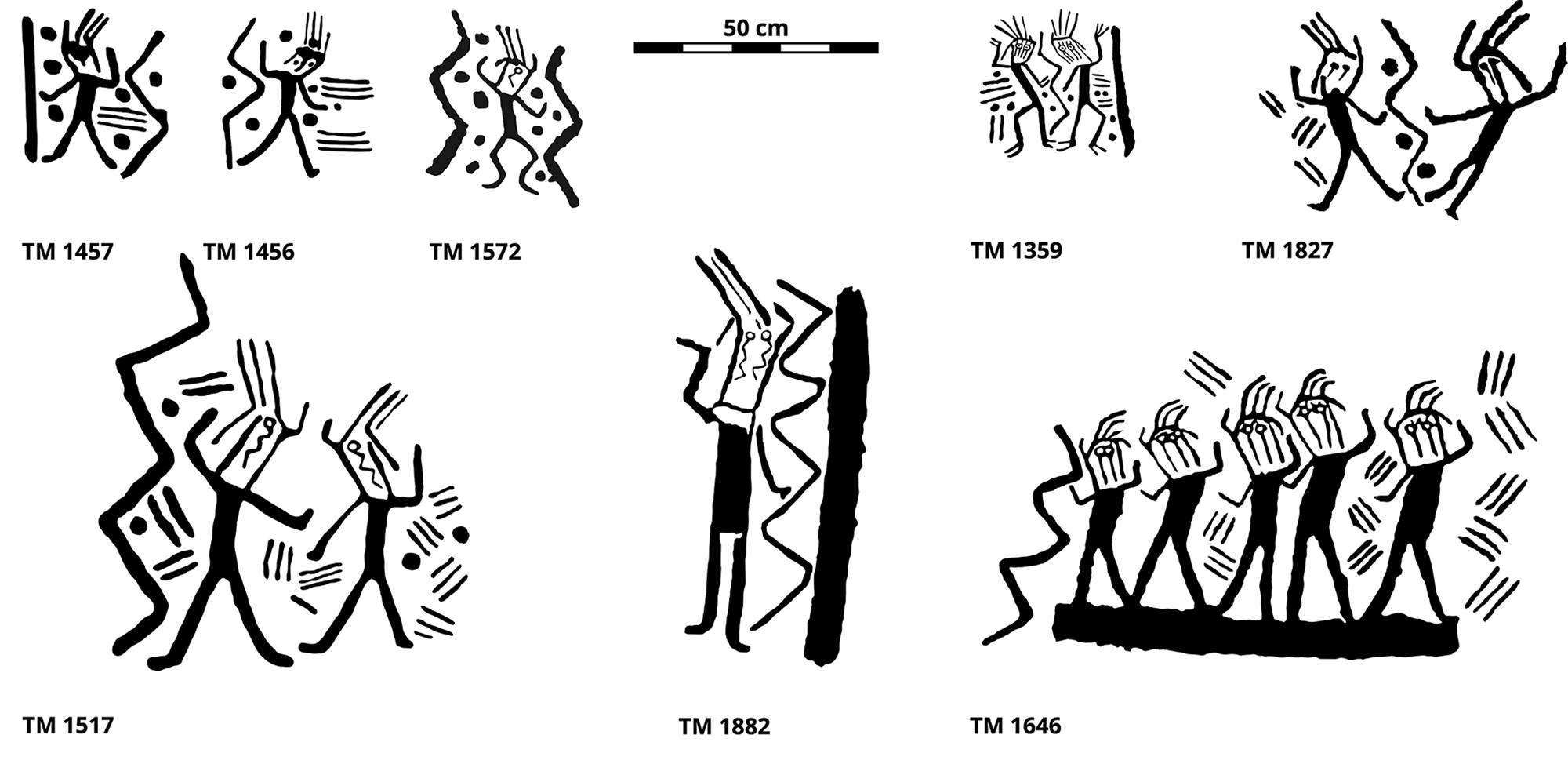A series of ancient engravings found on volcanic boulders in southern Peru might represent music that was performed during shamanic rituals involving hallucinogenic plants 2,000 years ago. Consisting of what appears to be dancing human figures surrounded by zigzagging lines and other geometric forms, the enigmatic art eludes concrete interpretation, although a new analysis suggests that these abstract shapes may depict the songs that transported participants to other dimensions during their psychedelic trips.
The pre-Columbian designs can be found at Toro Muerto, which contains one of the richest collections of rock art in South America. A desert gorge, the site is strewn with thousands of boulders, some 2,600 of which feature ancient etchings.
Describing the drawings in a new study, researchers explain that the artworks contain “an almost overwhelming repetition of images of dancing human figures (known as danzantes), unique in the region, and an extraordinary accumulation of geometric patterns, most often in the form of vertical zigzag, straight and sinuous lines varying in width, sometimes with accompanying dots or circles.” Previous attempts to interpret these zigzags have suggested that they may represent snakes, lightning, or water, although the study authors believe they may have an alternative meaning.
Examples of “danzantes” at Toro Muerto.
To build their hypothesis, the researchers point out the striking similarities between the drawings at Toro Muerto and the traditional artwork of the Tukano culture in the Colombian Amazon. In the case of the latter, geometric designs have been linked to the visions induced by the hallucinogenic brew ayahuasca, which has been ritually ingested by Indigenous Amazonian communities for millennia.
Anthropological analyses of these rituals have repeatedly highlighted the importance of music, with songs known as icaros being sung by shamans as a means of communicating with the gods and journeying through the spiritual cosmos. Intriguingly, studies into the significance of zigzags in Tukano artwork have revealed that “the Tukano saw in them the representations of songs which were an integral part of the ritual, having also agentive power, and constituting a medium for transfer to the mythical time of the beginning.”
In other words, within a Tukano context, these shapes depict the shamanic music that enchants ritual participants under the effects of ayahuasca, delivering them to a “parallel world” in which they are able to reconnect to their ancestral mythology. Applying this same interpretation to the artworks at Toro Muerto, the study authors suggest that “the central danzante surrounded by wavy lines is actually ‘surrounded’ by songs, which – embodying energy and power simultaneously – were the source of transfer to another world.”
Admitting that their theory is somewhat speculative, the researchers nonetheless conclude that these pre-Hispanic drawings “illustrated a graphically elusive sphere of culture: singing and songs.”
Addressing the deeper meaning behind these musical depictions, the authors explain that “the cosmos constituted the space that the shaman explored in his visionary journey, while the wavy and zigzag lines could have been visualizations both of the songs taking him to that parallel reality as well as the sensation of being in that other world.”
The study is published in the Cambridge Archaeological Journal.
Source Link: This 2,000-Year-Old Peruvian Rock Art May Depict Psychedelic Music
